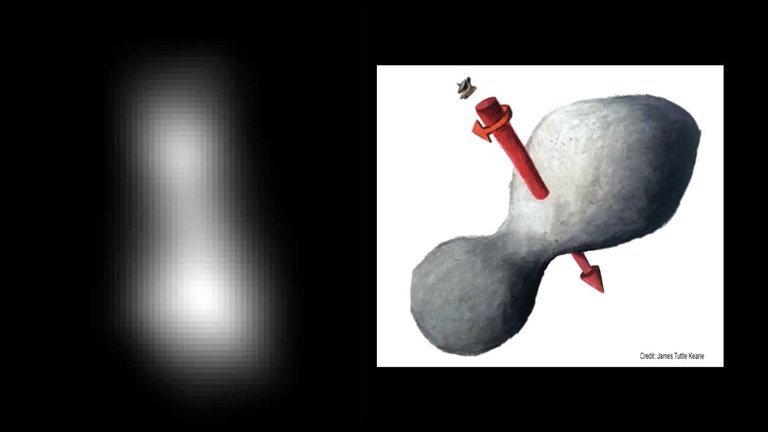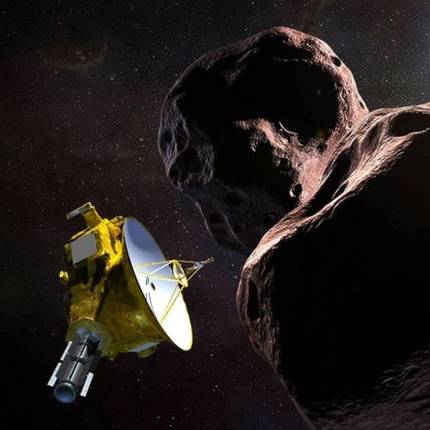New Horizons probe sends first photo of Ultima Thule

Ultima Thule (2014 Mu69) is in the Kuiper belt, among other thousands of asteroids and millions of comets. Located 6.4 billion kilometers from Earth, it has become the furthest body in the universe studied closely by a probe.
According to the first photograph, Ultima Thule is 35 km long and 15 km wide. They still do not know whether it is a single two-lobed body or whether two bodies have been separated, but astrophysicists at Johns Hopkins University USA. have remained to analyze the photos taken by the probe as soon as possible and answer the question.
On 1 January the New Horizons probe was passed at a speed of 18 km per second, but its objective was to capture illustrative images at that brief meeting. In fact, the New Horizons mission already yielded significant results in 2015, when it passed near Pluto and sent high-precision images into its atmosphere and surface. Thanks to these images, Pluto went from a blurred sphere to a clearer world of glaciers, water and organic compounds. This time, in addition, it is expected that three times better resolution images will be sent.
Ultima Thule's research aims to clarify the genesis of the solar system, since it is believed that the body is made up of materials that began to create about 4,000 million years ago. On the other hand, he wants to clarify if the bodies of the Kuiper belt deflect the trajectory of the comets and approach the core of the solar system, allowing the comets to collide with the Earth and be involved in the creation of life on our planet.
Buletina
Bidali zure helbide elektronikoa eta jaso asteroko buletina zure sarrera-ontzian












